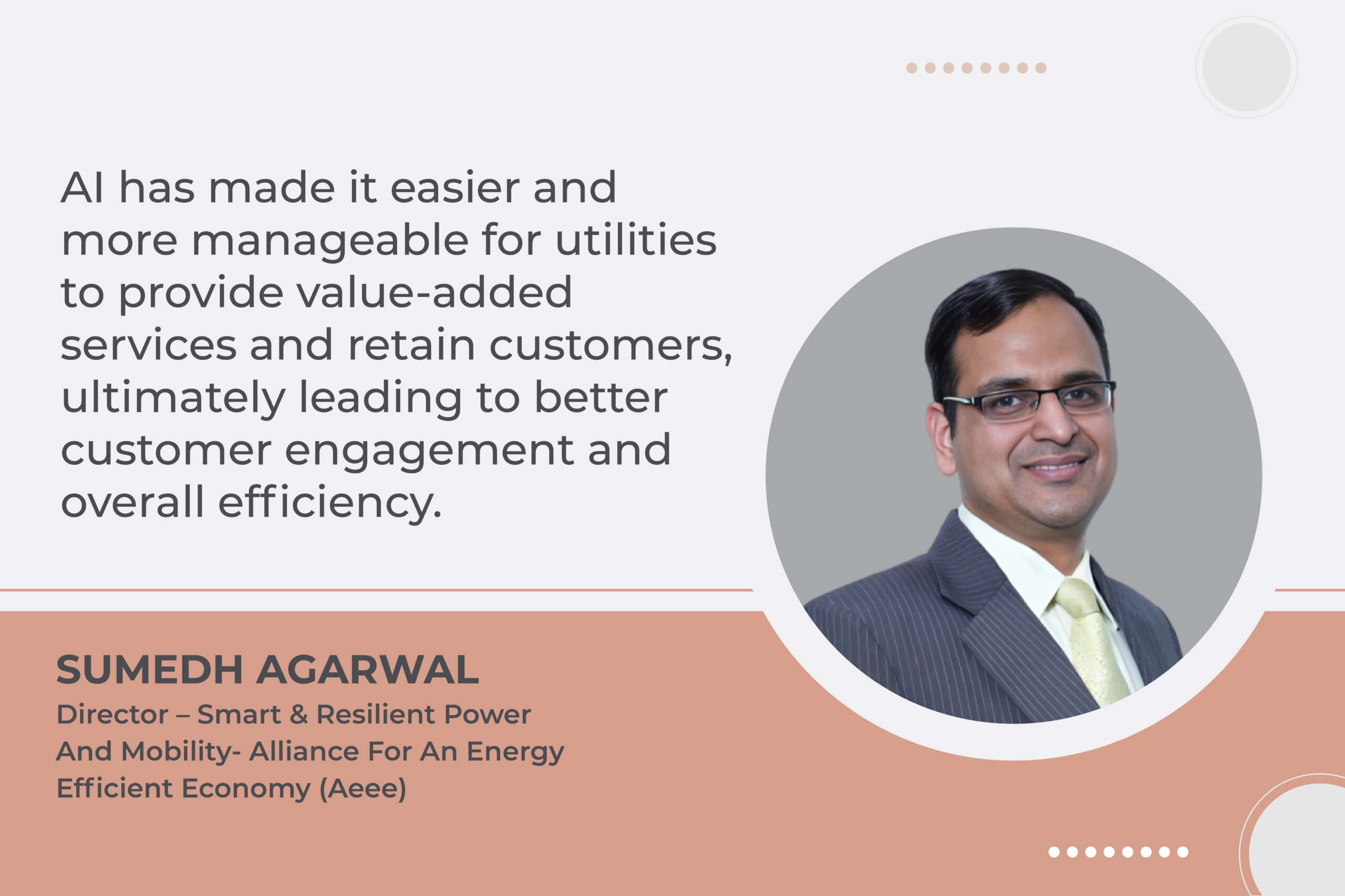AI is building an energy-efficient culture, cutting greenhouse gas emissions
By Staff Report September 26, 2025 3:51 pm IST
By Staff Report September 26, 2025 3:51 pm IST

By leveraging AI in various use cases, utilities can reduce costs, improve efficiency, and enhance customer engagement.
Our goal is to foster an energy-efficient culture that equitably reduces greenhouse gas emissions and mitigates climate change. The power sector in India has grown with a CAGR of around 5 percent over the last decade. Per capita consumption has increased from 1000 to 1400 kilowatt-hours, indicating a 40% year-on-year increase in electricity consumption.
At one point, India had a high capacity of coal and is now moving towards renewable energy sources. The shift towards renewable energy will bring energy security, but it will also present challenges, such as managing intermittent variable electricity. However, this shift will lead to energy independence and reduced reliance on imports, enabling faster and more sustainable progress. AI’s ability to identify cleaner energy options makes its role increasingly important.
Use cases of AI
There are many use cases where AI is contributing significantly, as mentioned hereunder:
Drones are being used for transmission and distribution inspections, particularly in the transmission sector, due to their ability to navigate long lines.
In the distribution sector, drones successfully detected theft at various intervals. A drone captured an image of a cracked insulator, which was later provided to the lineman in a small box. When an insulator cracks, corona discharge occurs, leading to outages. Manual inspection cannot fully assess the function or the severity of minor cracks. AI automatically analyses images to detect severity indices, invisible wire and line conditions, and critical faults resulting from improper joint placement and craftsmanship. As a result, utilities can reduce costs by 30 to 50 percent.
It achieves insulation and detects status. Regarding the benchmarks, the loss reduction was 1.5 per cent of AT&C loss, with technical issues stemming from infrastructure problems. The payback time with analytics was five times faster than the manual process, resulting in a payback within two years.
Renewable assets
It is vital to understand that renewable energy farms, such as solar or wind farms, cannot compromise on meeting their commitments. This is because they are independent power producers and often face severe penalties if they fail to meet their power purchase agreements.If a hot spot occurs, it takes time. It has been observed that a company’s drone inspection of 900,000 modules in five days has significantly reduced the time required to identify dangerous hot spots, compared to the two months needed for manual inspections and imaging methods. Hot spots, formed by bird droppings, can indicate localised issues, such as manufacturing defects or leaks. These dangerous spots are identified and immediately sent to a crew. Similarly, thermal imaging in wind farms helps monitor blade performance and detect small cracks, ensuring safety and efficiency.
Rope excess inspection accounts for 1 percent of wind farm operational expenditure. One third of these technologies is costly. It is helpful for all IPPs that have their solar or wind farms, and naturally, they have reduced manpower costs and overall inspection and maintenance expenses.
Smart metering
India has an ambitious target of installing 250 million smart meters through RDSS, and the amount of data these smart meters are going to generate is phenomenal. AI has supported improvements in data inspection. However, there have been instances of tariff or subsidy misuse in some areas. This enabled AI to detect and inform the time for inspections, providing evidence for further analysis. AI can detect and analyse data more effectively, enhancing the efficiency of monitoring and preventing misuse in various sectors.
AI has improved customer engagement in utilities, reducing the volume of high-bill calls and providing timely bill shock warnings. This is due to the analytics capabilities of certain entities, which can disaggregate data to understand which appliances contribute to the load and provide monthly usage statements. This helps reduce energy usage and retain consumers. Utility companies are also increasingly focusing on value-adding services to retain customers. If customer load increases or they have a higher propensity to pay, they can recommend rooftop solar installation, energy-efficient appliances, or EV charging based on data. These capabilities, which utility cannot provide due to short-term casualties, are becoming easier and more manageable through AI and market-based solutions.
Overall, AI has made it easier and more manageable for utilities to provide value-added services and retain customers, ultimately leading to better customer engagement and overall efficiency.
***********************
We use cookies to personalize your experience. By continuing to visit this website you agree to our Terms & Conditions, Privacy Policy and Cookie Policy.